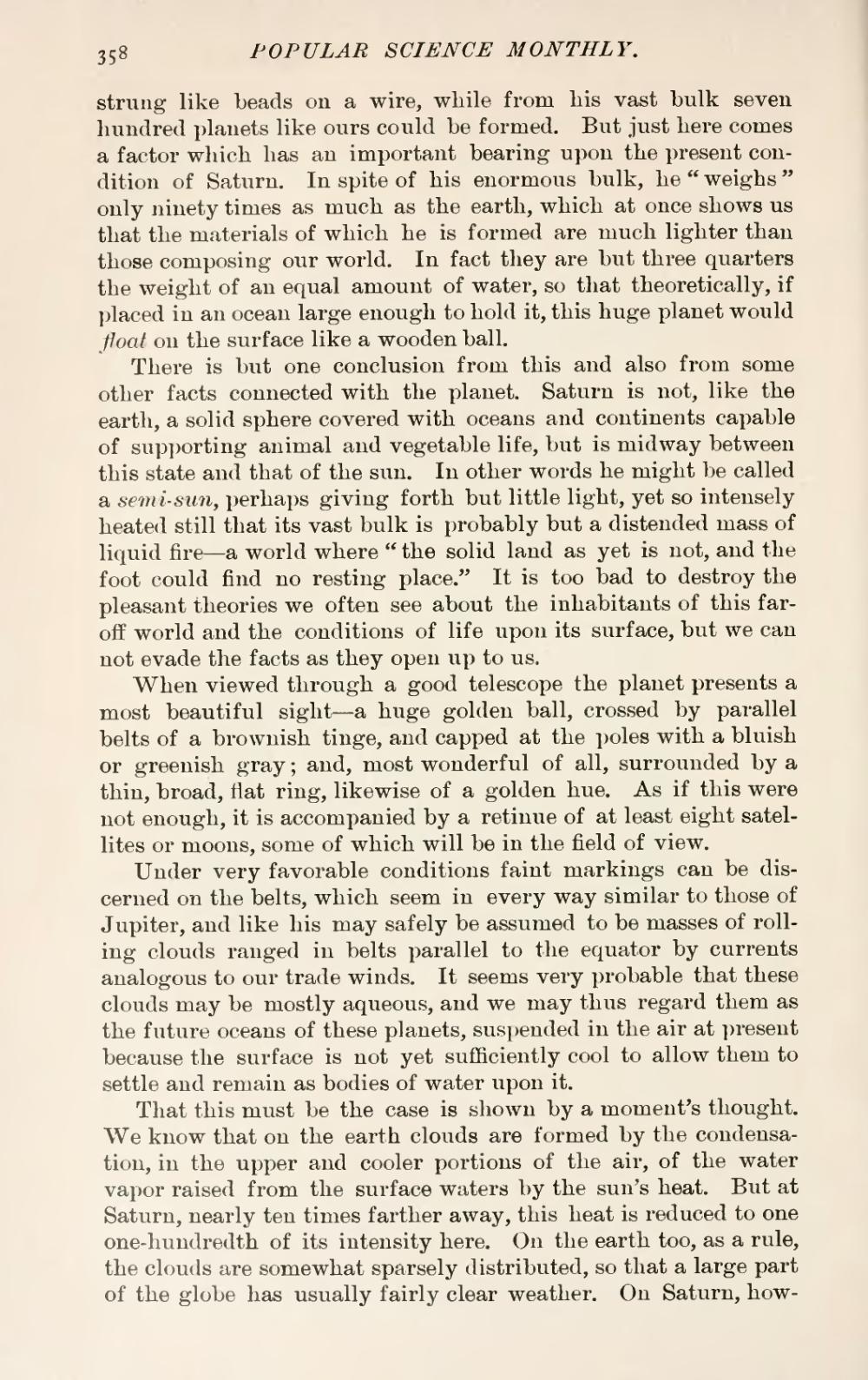strung like beads on a wire, while from his vast bulk seven hundred planets like ours could be formed. But just here comes a factor which has an important bearing upon the present condition of Saturn. In spite of his enormous bulk, he "weighs" only ninety times as much as the earth, which at once shows us that the materials of which he is formed are much lighter than those composing our world. In fact they are but three quarters the weight of an equal amount of water, so that theoretically, if placed in an ocean large enough to hold it, this huge planet would float on the surface like a wooden ball.
There is but one conclusion from this and also from some other facts connected with the planet. Saturn is not, like the earth, a solid sphere covered with oceans and continents capable of supporting animal and vegetable life, but is midway between this state and that of the sun. In other words he might be called a semi-sun, perhaps giving forth but little light, yet so intensely heated still that its vast bulk is probably but a distended mass of liquid fire—a world where "the solid land as yet is not, and the foot could find no resting place." It is too bad to destroy the pleasant theories we often see about the inhabitants of this far-off world and the conditions of life upon its surface, but we can not evade the facts as they open up to us.
When viewed through a good telescope the planet presents a most beautiful sight—a huge golden ball, crossed by parallel belts of a brownish tinge, and capped at the poles with a bluish or greenish gray; and, most wonderful of all, surrounded by a thin, broad, flat ring, likewise of a golden hue. As if this were not enough, it is accompanied by a retinue of at least eight satellites or moons, some of which will be in the field of view.
Under very favorable conditions faint markings can be discerned on the belts, which seem in every way similar to those of Jupiter, and like his may safely be assumed to be masses of rolling clouds ranged in belts parallel to the equator by currents analogous to our trade winds. It seems very probable that these clouds may be mostly aqueous, and we may thus regard them as the future oceans of these planets, suspended in the air at present because the surface is not yet sufficiently cool to allow them to settle and remain as bodies of water upon it.
That this must be the case is shown by a moment's thought. We know that on the earth clouds are formed by the condensation, in the upper and cooler portions of the air, of the water vapor raised from the surface waters by the sun's heat. But at Saturn, nearly ten times farther away, this heat is reduced to one one-hundredth of its intensity here. On the earth too, as a rule, the clouds are somewhat sparsely distributed, so that a large part of the globe has usually fairly clear weather. On Saturn, how-
